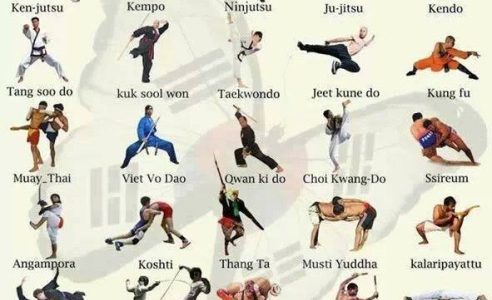Recognizing The Essential Differences Between Standard Martial Arts And Modern Battle Sports
Recognizing The Essential Differences Between Standard Martial Arts And Modern Battle Sports
Blog Article
Author-Camp Brady
When you think of martial arts, do you lean much more towards the conventional techniques or the contemporary fight sporting activities? Each path offers one-of-a-kind benefits and experiences, shaped by their approaches and training methods. Typical martial arts stress individual development and self-control, while modern fight sporting activities concentrate on competition and performance. Recognizing these distinctions can lead you in choosing the ideal method for your trip. However exactly how do these differences manifest in training and ideology?
The Viewpoint and Background Behind Conventional Martial arts
While many individuals link martial arts with physical combat, the ideology and history behind standard martial arts run much deeper. You'll discover that these techniques emphasize individual development, self-control, and respect.
Originating from old techniques, standard martial arts were commonly established for Self-Defense and spiritual advancement. They embody principles such as balance, harmony, and self-constraint, guiding practitioners beyond plain battling skills.
As you train, you'll not only learn strategies however likewise acquire understandings into the society and values that shaped these arts. systema martial arts and practices, frequently passed down through generations, foster a feeling of neighborhood and belonging.
The Competitive Nature of Modern Combat Sports
Modern combat sporting activities have transformed the landscape of martial arts into an extremely affordable field, where professional athletes challenge in an examination of ability, strategy, and endurance.
You'll observe that competitors are usually organized with rigorous policies and regulations, making sure fair play and safety. These events attract huge target markets, sustaining the exhilaration and strength of matches.
Athletes train rigorously, not just for physical expertise yet likewise for mental toughness, understanding that every information counts in the ring. The adrenaline thrill throughout competitors is apparent, as competitors press their limitations to declare victory.
Fans value the athleticism and creativity entailed, making contemporary fight sports a thrilling phenomenon that remains to progress and astound fanatics all over the world.
Training Techniques and Methods: A Comparative Analysis
The competitive ambience of modern-day battle sports demands cutting-edge training techniques that vary considerably from conventional martial arts.
In https://www.gmanetwork.com/entertainment/celebritylife/hobbies/16816/look-celebrities-who-trained-in-martial-arts/photo , you'll concentrate on particular techniques, sparring, and conditioning, often using drills that imitate real battle circumstances. You'll see an emphasis on measurable efficiency and frequent competition to assess your abilities.
In contrast, conventional martial arts prioritize types, katas, and thoughtful teachings, frequently highlighting technique and regard over competition.
Training is typically much less extreme and might involve recurring practice as opposed to real-time sparring.
While both strategies develop ability and health and fitness, modern-day fight sporting activities give a much more vibrant and adaptable training environment, preparing you for instant challenges in the ring or cage.
Select the course that aligns with your goals and passions.
Verdict
In choosing between traditional martial arts and modern-day fight sports, it actually boils down to what you value the majority of. If you're looking for individual growth, discipline, and a feeling of community, standard arts may be your best fit. Yet if you prosper on competitors and real-time obstacles, contemporary fight sports could be the method to go. Eventually, both courses provide one-of-a-kind advantages, so it's all about aligning your training with your personal goals and rate of interests.
